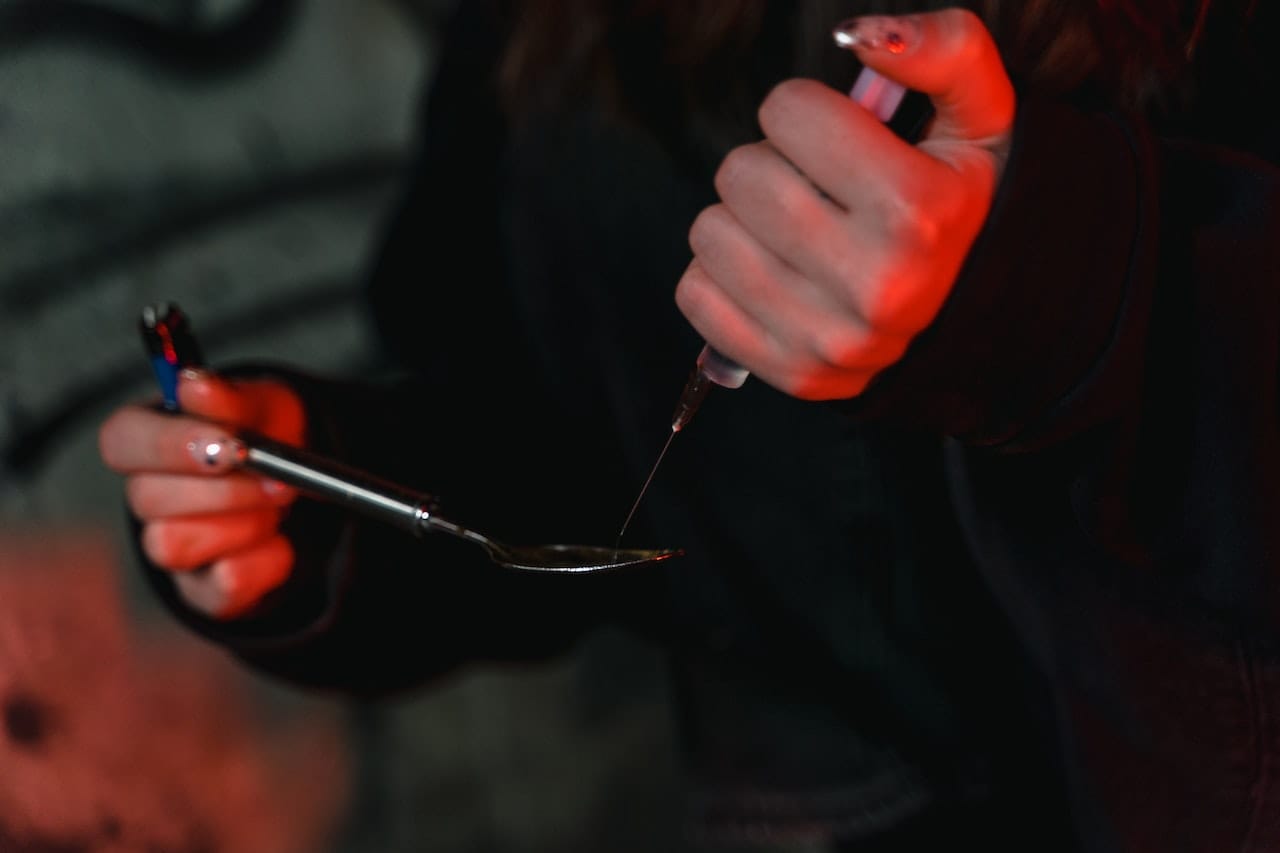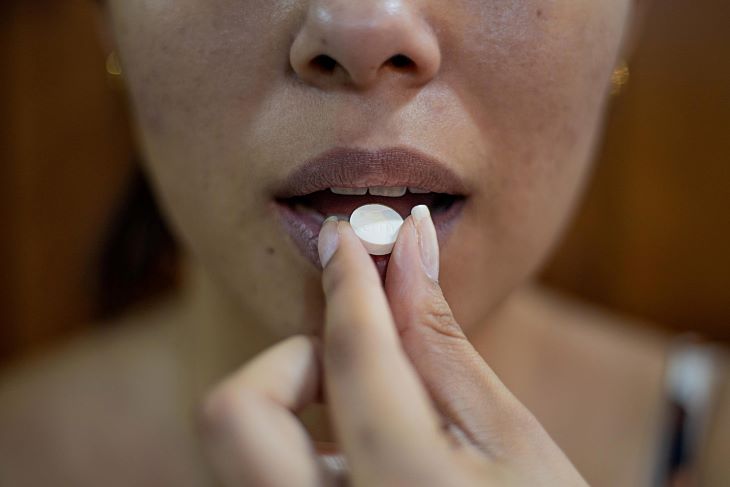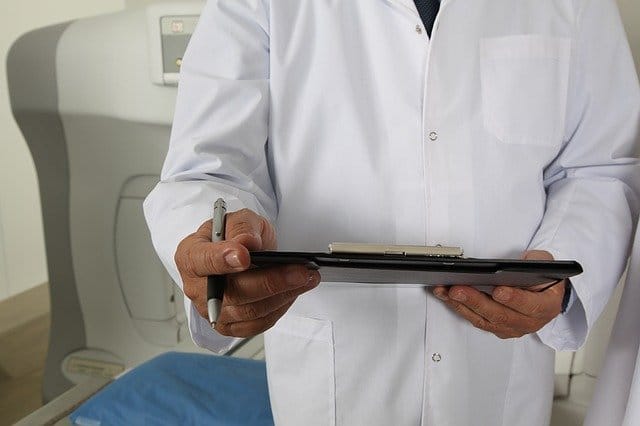Suboxone is a medication which combines Buprenorphine and Naloxone in order to treat opioid use disorders. Suboxone is the brand name for the combination of buprenorphine and naloxone.
Buprenorphine [1] is a synthetic opioid which is used to treat opioid use disorders by substituting a heavy and addictive opioid (such as Heroin or Fentanyl) with something which has a significantly lower addictive potential and also fewer side effects on a far less intense scale.
Naloxone [2] is a form of medicine which is prescribed in order to undo or minimise the effects of opioids.
This makes it an opioid antagonist, or simply an opioid blocker.
When someone has opioids in their system, an opioid antagonist or opioid blocker – such as Naloxone – will reverse specific symptoms such as slower breathing, drowsiness, and so on.
Both Buprenorphine and Naloxone are approved by the Medicines and Healthcare Products Regulatory Agency (MHRA) [3] in the UK and the Food and Drug Administration (FDA) [4] in the US.
Combining both of these substances in the form of Suboxone is safe to do so in the treatment of substance addiction.

Opioids [5] are a classification of drugs which can be both legal and illegal, with the most common forms of opioid addictions including:
It is estimated that around 16 million people are suffering from opioid use disorder globally. [8]
It is also estimated that over 120,000 deaths per year are attributed to opioid use disorder and opioid-related complications.
In the US, around 109,000 succumbed due to drug overdose in 2022, with opioids being responsible for over 81,000 of these fatalities. [9]
The different types of opioids work similarly, by activating opioid receptors [10] – which are areas of nerve cells in the brain and body called which can minimise or interfere with pain signals between the brain and body.
This can bring feelings of numbing, euphoria, drowsiness, relaxation and more.
However, symptoms can also include vomiting, diarrhoea, nausea, slowed breathing, and other adverse health effects.
Developing a tolerance, thus also increasing the quantities needed to feel the previous euphoric effects, puts people in extreme danger of suffering from overdose and death.
While Fentanyl, for example, is a legal medication and used to relieve pain, it is highly addictive.
While it has legitimate medical use for those suffering from chronic pain, recreational Fentanyl use can lead to respiratory failure and death.

Suboxone combines two forms of medication in order to optimise recovery from opioid use disorder.
It is often referred to as a form of MOUD – or Medication for Opioid Use Disorder.
The benefits of MOUD – such as Suboxone – include but are not limited to:
Buprenorphine can minimise cravings for opioid substances and their withdrawal symptoms without activating the same euphoric, addictive effects.
Buprenorphine also poses fewer and less intense side effects than substances such as Methadone.
For example, it has less of an effect on respiratory depression, and therefore it is safer and less likely to cause overdosing complications than other opioids such as Methadone.
Naloxone can block negative opioid effects. Naloxone is especially effective when it comes to preventing or minimising the severity of opioid overdoses, which are a frequent cause of death across the world.

Addictive opioid substances such as Fentanyl and heroin can cause symptoms such as respiratory depression, reduced heart rate, drowsiness, slurred speech, and more.
Severe symptoms include losing consciousness, vomiting, and complications which can lead to death.
Since Naloxone has quick acting properties, [12] it can quickly and safely reverse these effects and negate the dangerous potential of these symptoms.
By combining Buprenorphine and Naloxone – in the form of Suboxone – patients can benefit from both the minimisation of potentially severe or even fatal overdosing complications and also cravings for addictive opioid substances.
Suboxone reduces levels of intoxication, withdrawal symptoms and cravings, which is integral in helping patients overcome substance dependence.

Suboxone is different to the medication Subutex, which only contains Buprenorphine.
In addition to Subutex, other names for buprenorphine include Cizdol and Brixadi.
Naloxone is also known under the brand name Narcan.

Although Suboxone is a legitimate and effective form of medication when combating Opioid Use Disorder, there are still things to consider with regard to its safe consumption.
Suboxone is legal and a prescription medication used to treat Opioid Use Disorder.
When recovering from an Opioid Use Disorder, patients will generally take Suboxone once a day, and they must be prescribed medication from a licensed physician or doctor.
Although Suboxone is highly useful and legitimate when it comes to medical use and treating opioid use disorders, there is the potential for dependence.
It is possible to build a dependence on suboxone to the point where it will cause withdrawal symptoms.
However, the potential for addiction and withdrawal symptoms with Suboxone is far less than with opioid substances such as heroin or fentanyl.
Buprenorphine, for example, can be addictive.
Suboxone is often prescribed to treat patients suffering from a Buprenorphine addiction. [13]
Since Suboxone is only a partial agonist for opiate receptors, the euphoria or “high” is far less than other opioids, according to Harvard Health.
Furthermore, it is incredibly difficult to overdose on Suboxone due to it only being a partial opiate receptor.
However, it should be noted that polydrug use – the use of two or more drugs (including alcohol) – can lead to overdosing and other health complications.

Patients may experience the effects of Suboxone for around 24 hours.
However, variables such as weight, metabolism, and more mean that the amount of time can fluctuate, and it can have an effect even up to 60 hours after use.
Because of this, it is typically taken only once per day.
Unless the patient is specifically tested for a substance such as Buprenorphine or Naloxone, Suboxone is highly unlikely to show up on a drug test.
If you are being tested for cannabis, cocaine, or even other opiates such as heroin, for example, it is highly unlikely to show up on a drug test or lead to a false positive.
Suboxone is ingested by taking it in the form of an oral film which is placed in the mouth. [14]
The thin oral film typically takes around 5 to 10 minutes to dissolve after being placed in the mouth.
This makes suboxone a quick-releasing drug because it dissolves in the mouth, is absorbed quickly due to high vascularisation in the mouth, and then released into the bloodstream.

Substance addiction is a chronic disease and is technically not “curable.”
This means that while suboxone can help patients overcome their dependence, they are still susceptible to relapsing and falling back into addiction.
Because of this, a range of long-term methods and approaches must be adopted in order to remain in recovery.
This can be achieved at a drug and alcohol rehab.

At a drug and alcohol rehab, patients will undergo a range of stages which will optimise their recovery and help them establish long-term sobriety.
These stages include:
When you call a referral service such as ourselves, a trained admissions officer will help you understand the addiction recovery process and help you decide which options are best for you.
Once you are ready, you can take a health assessment where you will need to provide some insight about your medical history, addiction history, physical and mental health in order to optimise your recovery.
Your information will only be shared with addiction specialists and licensed counsellors who will determine the best course of action for your unique addiction recovery journey.

Once you enter rehab, you may be required to undergo a medical detox.
Here, you’ll stay in a safe and comfortable environment while you allow addictive substances to withdraw from your body.
You’ll be prescribed medication – such as Suboxone – from an addiction physician in order to minimise cravings, withdrawal symptoms, and other health complications.
This stage will take around 7 to 10 days and you will have 24/7 assistance from the medical professionals.
For many patients, this stage is crucial to ensure a safe detox, and this stage will improve your health before you proceed with the next stage of the recovery process.
Patients will need to address the root causes of their addiction and adapt by developing positive coping mechanisms to maintain a healthy lifestyle of sobriety.
Long-term recovery can only be achieved once the patient learns to address and change their behaviour.
The most popular forms of addiction therapy and counselling include Cognitive Behavioural Therapy, Dialectical Behavioural Therapy, Family Therapy, Holistic Therapy and more.
Many of these therapies are communication-based, employed in order to personalise sessions for patients who will be discussing a range of topics with a licensed counsellor.
Group therapy and family therapy are also effective in establishing stronger support networks, improving communication and more.

While rehab will help patients develop a vast range of useful coping mechanisms and knowledge in order to sustain a healthy lifestyle, maintaining recovery independently can be difficult at first.
Patients will continue to receive support in the form of an aftercare programme.
Aftercare programmes typically offer support sessions, access to fellowship groups, active engagement strategies such as the 12-step plan and more to support the patient during their post-rehab life.

Contact Rehab 4 Addiction today by dialling the number 0800 140 4690.
When you call us, a friendly and dedicated member of our team will help you understand the addiction recovery process, and how you can optimise your recovery.
Whether you merely have questions about the process, the different types of treatments or rehab facilities, or you are ready to begin your treatment programme, we are at your disposal and your requirements are at the forefront of our priorities.
Once you have consented and are ready to begin your addiction treatment, we will ask for information regarding your medical history, addiction history, physical and mental health condition, and any preferences you have when it comes to entering rehab.
We will be with you every step of the way.
If at any point you’d like to slow down the process or take your time, or whether you want to be admitted to rehab as soon as you possibly can, we will cater to your unique requirements to ensure that the process is as smooth as possible.
With our expertise and your intrinsic motivation, we can beat addiction together.
[1] https://www.ncbi.nlm.nih.gov/books/NBK459126/
[2] https://nida.nih.gov/publications/drugfacts/naloxone
[3] https://products.mhra.gov.uk/product/?product=SUBOXONE
[4]https://www.accessdata.fda.gov/drugsatfda_docs/label/2021/020733s028lbl.pdf
[5] https://nida.nih.gov/research-topics/opioids
[6] https://www.cdc.gov/opioids/basics/fentanyl.html
[7] https://www.cdc.gov/opioids/basics/prescribed.html
[8] https://www.ncbi.nlm.nih.gov/books/NBK553166/
[9] https://pubmed.ncbi.nlm.nih.gov/37584532/
[10] https://www.hopkinsmedicine.org/health/treatment-tests-and-therapies/opioids
[12] https://pubchem.ncbi.nlm.nih.gov/compound/Naloxone